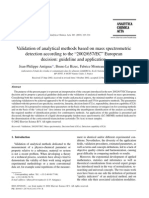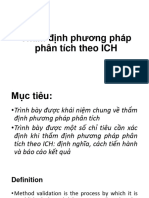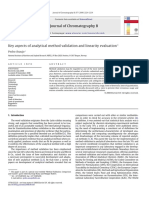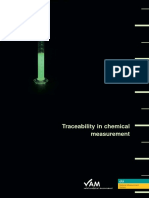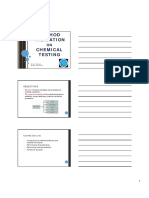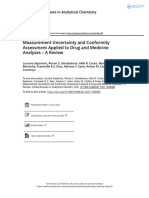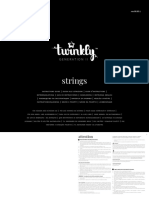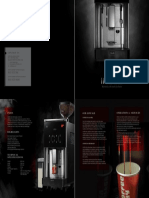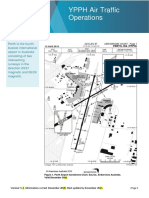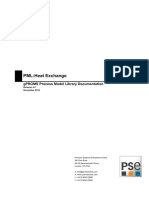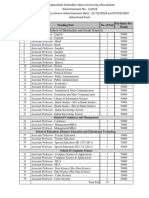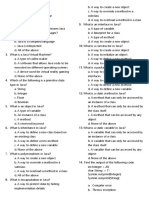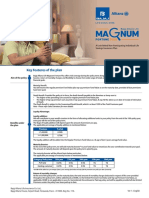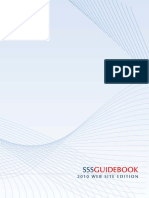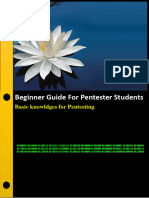3/7/2024
VERIFICATION,
VALIDATION AND
METHOD PERFORMANCE
Dr. Marios Kostakis
National and Kapodistrian University of Athens
Member of Method validation Working group
• Terminology and definitions
• Method’s Performance Characteristics
Outline • Overview about Performance
characteristics
1
� 3/7/2024
Verification: provision of objective evidence
that a given item fulfills specified
requirements (TAM)
Validation: verification, where the specified
Terminology requirements are adequate for an intended
use (TAM)
Which are the boundaries between the
validation and verification?
Verif ication:
Sta nda rd methods of ISO, a nd na tiona l sta nda rds.
Verification Validation:
in- house methods / methods for litera ture (scientif ic
pa pers):
vs Non- sta nda rd methods
La bora tor y - designed /developed methods
Validation Sta nda rd methods used outside their intended scope
Amplif ica tion a nd modif ica tion of sta nda rd methods.
Method modification: Validate or verify?
2
� 3/7/2024
How should methods be validated?
Extend of validation studies
Method Selectivity
Detectability
Limit of Detection (LOD)
Performance Limit of Qua ntif ica tion (LOQ )
Working Range
Characteristics Linea rity
Trueness
bia s, recover y
Precision
repea ta bility, intermedia te precision, reproducibility
Ruggedness or Robustness
How should methods be validated?
Extend of validation studies
Method
Performance
Characteristics
3
� 3/7/2024
HISTORICAL
ΔDecade
ε κ α ε τ ί α 11990s
990:
I n t r o d u c e d t h e t e r m " Va l i d a t i o n ", t h e f i r s t h o r i z o n t a l g u i d e l i n e s f o r
t h e Va l i d a t i o n o f A n a l y t i c a l M e t h o d s a r e i s s u e d . E u ra c h e m G u i d e :
T h e F i t n e s s f o r P u r p o s e o f A n a l y t i c a l M e t h o d s ( 1 s t e d .) ( 1 9 9 8 )
ΔDecade
ε κ α ε τ ί α 22000s
000:
T h e i m p o r t a n c e o f Va l i d a t i o n i s s t r e n g t h e n e d , m o r e i n s t r u c t i o n s a r e
i s s u e d f o r t h e va l i d a t i o n o f a n a l y t i c a l m e t h o d s ( E C 6 5 7 / 2 0 0 2 ) a s
w e l l a s t h e p e r f o r m a n c e c r i t e r i a ( E C 3 3 3 / 2 0 0 7 , E C 4 0 1 / 2 0 0 6 , e t c .) .
ΔDecade
ε κ α ε τ ί α 22010s
010:
S e c t o r s p e c i f i c g u i d e l i n e s w e r e i s s u e d ( p e s t i c i d e s , t o x i c o l o g y, f o o d
a n d a n i m a l f e e d , m a t e r i a l s i n c o n t a c t w i t h f o o d , e t c .) .
O l d e r v e r s i o n s a r e r e v i s e d , m o r e e x p e r i e n c e f r o m l a b o ra t o r y.
ΔDecade
ε κ α ε τ ί α 22020s
020:
Re v i s i o n o f E C 2 0 0 2 / 6 5 7 f r o m E C 2 0 2 1 / 8 0 8 .
GUIDELINES
• Horizontal Guidelines
• Eurachem, Τhe fitness for purpose of
A n a l y t i c a l M e t h o d s , 2 nd edition 2014
• Sector-specific Guidelines
Pharmaceurical Sector
• FDA, Bioanalytical Method Validation,
2018
• ICH, Validation of Analytical
Procedures, 2024
Food and Feed
• SANTE for pesticides. 2021, revision
every 2 years.
• EC 2021/808, performance of
analytical methods for residues of
pharmacologically active substances,
replace EC 2002/657.
• EC 2006/401, mycotoxins (under
revision, draft online)
4
� 3/7/2024
• S e l e c t i vi t y : p r o p er t y o f a mea s u r i n g s y s t em, u s ed
w i t h a s p eci f i ed mea s u r emen t p r o ced u r e , w h er eb y i t
pr ov i d es mea s u r ed q u a n t i t y v a l u es f o r o n e o r mo r e
mea s u ra n d s s u ch t h a t t h e v a l u es o f ea ch mea s u ra n d a r e
Selectivity i n d ep en d en t o f o t h er mea s u ra n d s o r o t h er q u a n t i t i es i n
t h e p h en o men o n , b o d y, o r s u b s t a n ce b ei n g i nv es t i g a t ed
(TAM 4 .2 )
• A s s e s s m e nt : F r om t h e s i m pl es t ca s e (t o pr ov e t h a t
bl a n k i s bl a n k ) t o t h e m os t com pl i ca t e s u ch a s i n m a s s
s pect r om et r y (i den t i f i ca t i o n cr i t er i a : Ret en t i on t i m e,
i den t i f i ca t i on poi n t s , i on ra t i o)
• S el ect i v i t y ba s ed on t h e det ect i on s y s t em .
• S p e c i f i c i t y vs S e l e c t i vi t y
• S p e c i f i c i t y : t h e a b i l i t y t o p r ov i d e s i g n a l s t o
ef f ect i v el y i d en t i f y t h e a n a l y t e.
• B i och em i ca l m et h ods a n d i m m u n och em i ca l m et h ods
EC 2021/808:+/- 40% • It i s n ot r ecom m en d e d for gen era l pu r pos e u s e. Ma ny
SANTE: +/- 30% t i m es , bot h t er m s a r e u s ed i n t er ch a n gea bl e
Working Range (1)
Or Measuring interval: set of values of
quantities of the same kind that can be
measured by a given measuring
instrument or measuring system with
specified instrumental measurement
uncertainty, under defined conditions
• It is not only the linear range.
• From the LOQ to the point that
unacceptable change of measurement
uncertainty.
Assessment: Very often Correlation
coefficient (R) is used.
Even it is the most used criterion, it is not
recommended for linearity but only for
correlation!
Instead:
10
5
� 3/7/2024
Working Range (2)
• Proposed criteria: Residual plots,
Relative back-calculated error (%RE):
𝐶 𝑚𝑒𝑎𝑠𝑢𝑒𝑟𝑒𝑑 −𝐶𝑡𝑟𝑢𝑒
• 𝑥100
𝐶 𝑡𝑟𝑢𝑒
• FDA, bioanalytical method: +/- 15%
RE, +/- 20% RE near to LOD
• SANTE, EURL-POPs: +/- 20% in all
range of concentrations
M o re d e t a i l s : Ra p o s o F., Tre nd i n Ana l yt i c a l
C he m i s t r y, 77, 2016, 167 - 185 , d o i :
ht t p ://d x. d o i . o r g / 1 0. 1 0 16 / j . t ra c . 2 0 1 5. 1 2 . 0 0 6
11
Working Range (3)
To weight or not weight?
Wei gh t i n g ca l i bra t i on i s u s efu l i n m a s s s pect r om e t r y, du e
t o t h e di ffer en c e s i n va r i a t i on a t l ow a n d h i gh
con cen t ra t i on s .
G e ne ra l rul e : a w ei gh t 1 / x 2 i s t h e m os t a ppr opr i a t e i n
m a s s s pect r om et r y.
N o cr i t er i a for t h e s el ect i on of t h e a ppr opr i a t e wei gh t .
It n ot ea s y t o per fom wei gh t i n g ca l i bra t i on i n Mi cr os o f t
E xcel , bu t a l l a va i l a bl e m a s s s pect r om et e r s of t wa r e s u s ed
for qu a n t i f i ca t i on h a v e t h e opt i on for wei gh t i n g ca l i bra t i on .
More details:
Dolan, J. W., LCGC, 27, 7, 2009,153-540
Almeida, A. M., et al, J Chromatogr. B, 774, 2, 2002, 215-222. doi: 10.1016/s1570-
0232(02)00244-1
12
6
� 3/7/2024
Accuracy Measurement accuracy: closeness of
agreement between a measured quantity
value and a true quantity value of a
measurand (TAM 4.7)
Accuracy influenced by random and
systematic effects on results.
Simple words: Accuracy= Trueness and
Precision.
13
Measurement trueness: closeness of agreement
Trueness between the average of an infinite number of
replicate measured quantity values and a
reference quantity value (TAM 4.5)
Assessment: (certified) Reference Material,
spiking samples, alternative well-defined method.
Calculation of bias, absolute or relative
(recovery).
No substantial changes : general rule for
acceptable limits of recovery: 80-120% but as the
detection capability of technique becoming better
the criteria are changing
Mass fraction Criteria (EC 2021/808)
<1 μg/kg 50-120 %
>1-10 μg/kg 70-120%
≥10 μg/kg 80-120%
14
7
� 3/7/2024
Measurement precision: closeness of agreement
Precision between indications or measured quantity values
obtained by replicate measurements on the same
or similar objects under specified conditions (TAM
4.6)
Assessment: 6-15 replicates for each material
and concentration level, in different conditions:
repeatability, intermediate and reproducibility
conditions.
Calculating Relative standard deviation (or
through ANOVA)
Criterion: Horwitz equation or HorRat
Mass fraction Criteria (EC 2021/808)
<1 μg/kg 16 % (Horwitz)
>1-10 μg/kg 22 % (Horwitz)
≥10 μg/kg 25 % (*)
<10 μg/kg 30 % (*)
* The %RSD presented is guideline and should be as low as reasonably possible
15
LOD/LOQ, There are many ways to determine LOD: S/N,
calibration cur ve, spiking at low concentrations, etc.
CCα/CCβ Different approaches lead to different results.
More details: Guidance Document on the Estimation
of LOD and LOQ for Measurements in the Field of
Contaminants in Feed and Food, EU Technical
Repor t.
Off icial control:
CCβ
CCα • comparison with the limits.
Experimental approach: The lowest concentration
LOD LOQ •
level where precision and trueness are reliable
(reliable uncer tainty).
16
8
� 3/7/2024
1,65 S0 3,30 S0 10 S0 Reliable
uncertainty
reporting limit
LOD/LOQ,
LC LD Limit of
CCα/CCβ 0 CCα CCβ
Limit of blank Limit of Detection
Quantification
CC α /CC β :another approach to f ind the lowest reliable
concentration, especially used in veterinary drugs
residues.
Many simplif ications take place to calculate CC α /CC β
CCβ
CCα In many cases that there is MRL, are decision rule
and not the limit of detection.
LOD LOQ
EC 808/2021: Changes that include the uncertainty
in calculations => def initely decision rule.
e.g. 𝐶𝐶𝑎 = 𝐿𝐶𝐿 + 𝑘 99% ∗ 𝑢 (𝑐𝑜𝑚𝑏𝑖𝑛𝑒𝑑 )
More details: Van Loco J. et al, Anal Chim Acta, 586, 2007, 8-12
d oi :1 0 .1 0 1 6 /j .aca.20 06 .11 .0 58
17
Ruggedness (or Robustness) => no any
change
Robustness vs Ruggedness.
Matrix Effect (ME) => included in the new EC
2021/808
• Indication of signal suppression or
Other enhancement
• Very useful in mass spectrometry techniques,
Parameters especially in LC-MS/MS
• Indication for use standard calibration curve
or standard addition curve
• Same meaning as Matrix Factor but different
calculation
18
9
� 3/7/2024
• Validation is the important part of an
analytical laboratory.
• Performance characteristics are not
changing during the years
Conclusions • Changes due to Technological development
analytical techniques
• With increased experience, laboratories are
using more sector-specif ic and practical
ways to validate the method.
19
Thank you
for your
attention
Questions
20
10



